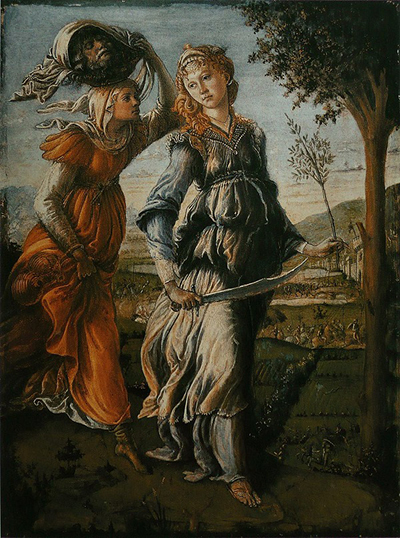The Return of Judith to Bethulia is a small fresco by Sandro Botticelli from early on in his development
The Galleria degli Uffizi in Florence retains this painting, alongside a whole host of other Sandro Botticelli paintings. It is believed by most that this artwork was produced in conjunction with The Discovery of the Murder of Holofernes, with just about enough documentation available on these two to back up the claim.
The artist created several paintings of this small size and they would have been used as visual treats to show off from time to time, rather than being permanently hung on the wall. Compare this to the wide panels for display in the Sistine Chapel, and clearly the final purpose of his art would greatily impact his decision making in the early stages.
The content of this scene allows the artist to display his remarkable ability as a portrait painter as well as making use of religious themes that would inspire him throughout his life, particularly towards the end of his career. Many of his drawings indicate the practice that he put into his depictions of the human body, which is famously difficult to accurately portray.
The biblical tale of Judith is a story of female strength and bravery and was a source of inspiration for many during the Renaissance. Walking alongside her in this painting is Abra, her maid. Abra holds Holofernes' head in the air whilst Judith holds an olive branch. The symbolism here needs little explanation and again makes Botticelli's work clear and understandable to even the occasional follower of Renaissance art.




